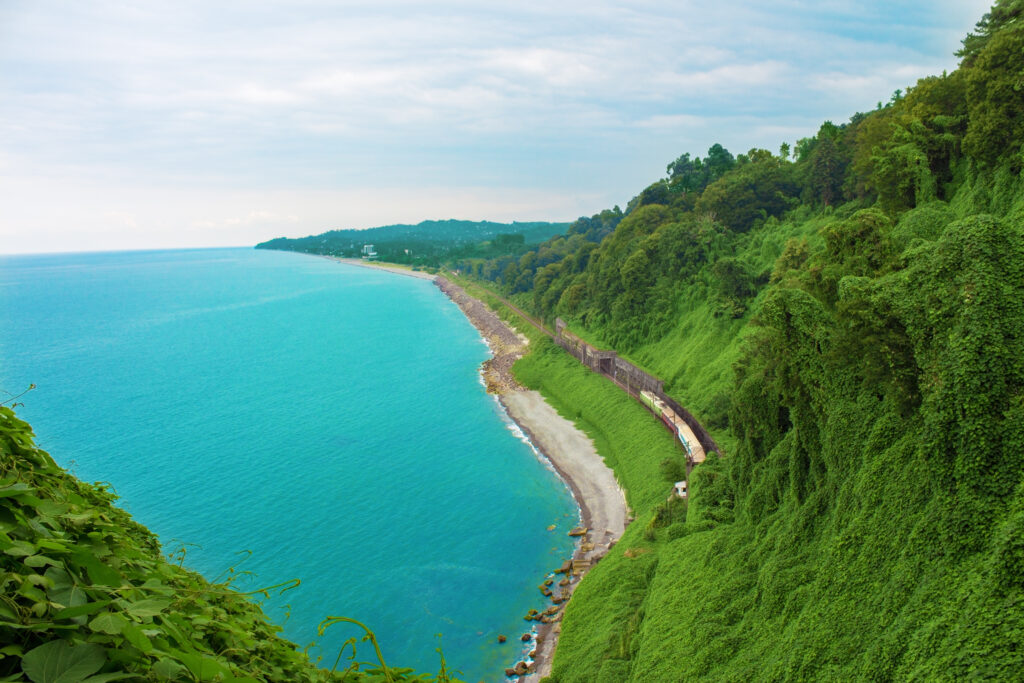Guria is located in the western part of Georgia, bordered by the Black Sea. Famous for its music and polyphonic singing, Guria is a region rich in cultural traditions and natural beauty. The countryside is a fetching mosaic of perfumed citrus groves, tea plantations, orchards, grape vines and cornfields.
Social relationships are strictly defined in Guria and they are known for their politeness and respect for the elderly. Gurians are also known for their building skills and handcrafts including leatherwork, saddle making and basket making.
As with much of western Georgia, Guria was once part of the legendary Kingdom of the Colchis tribe. Roman coins from the 3rd-4th centuries have been found here and the remains of ancient burial mounds have also been found in the dunes along the Black Sea. During the Middle Ages this part of Georgia was an independent principality governed by the Gurielis.
Gurian people were very good horse-riders and participated in Buffalo Bill’s Wild West Show. They traveled to Europe and America numerous times, starting their performances with Georgian songs and dances,
Guria is bordered by Samegrelo to the north-west, Imereti to the north, Samtskhe- Javakheti to the east, Adjara and the Meskheti Mountain range to the south, and the Black Sea to the west. It’s capital is the town of Ozurgeti.
Much of the eastern lowlands of Guria are awash in wetlands and swamp forests including the enchanting Kolkheti National Park. Thick beech, pine and fir forests cloak the mountains.
Winter in Guria is mild, while the summer is hot. This region is also characterized by high winds.
It is hard to beat the simple pleasure of exploring the pretty Gurian countryside. Discover the unique charms of the Gurian villages, their little wooden houses nestle into the gold and green landscape, corn kernels and pumpkins outside drying in the sun.
Lake Paliastomi, in Kolkheti National Park is of great interest to visitors thanks to its large bird population. More than 190 species have been sighted in the park including rare pelicans, storks and booted eagles.
Local museums such as the Niko and Ozurgeti Museums are also well worth a visit. They contain diverse collections from the Neolithic period and Bronze Ages, from Colchian axes and hoes to currency and a comprehensive library of Georgian, Russian, French books and writings.
Other historic places of interest include the Gurieli Church and Palace, the artificial caves of Khoreti and Gaguri, Bukistsikhe Castle, Goraberejouli Castle and Church, Upper Erketi Church, and the Udabno Monastery Complex and the Shemokmedi Monastery, one of the biggest cultural-educational centers in the region.
For tourists seeking a place to relax and unwind, Guria has a number of popular health resorts, perfect for a rejuvenating break away. Nabeghlavi resort is particularly known for its mineral waters while Ureki is a health resort on the beaches of the Black Sea, famous for its magnetic sand beaches. One of the best mountain resorts in Georgia is in Guria, in the village of Bakhmaro on the Meskheti Mountain range. Located 2,000 meters above sea level, it’s known for its unique climate of sea and mountain air.
